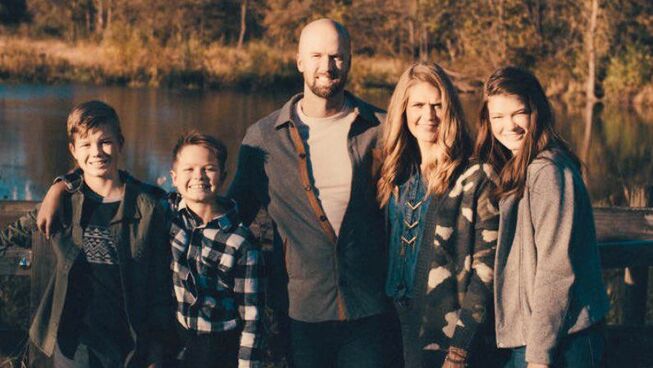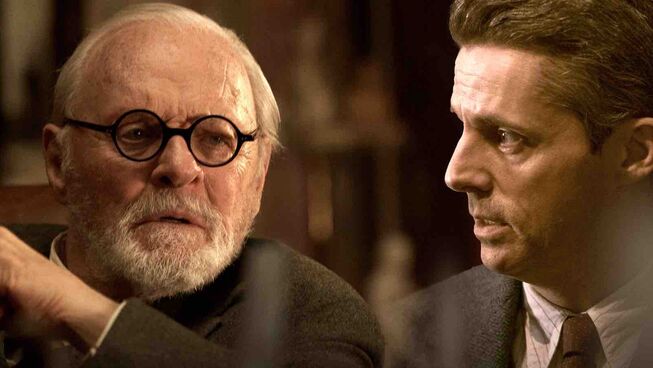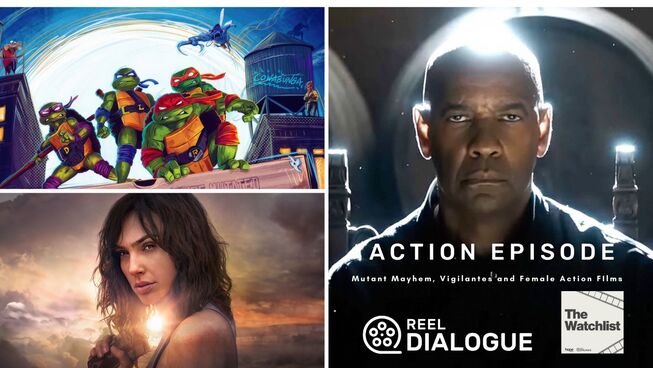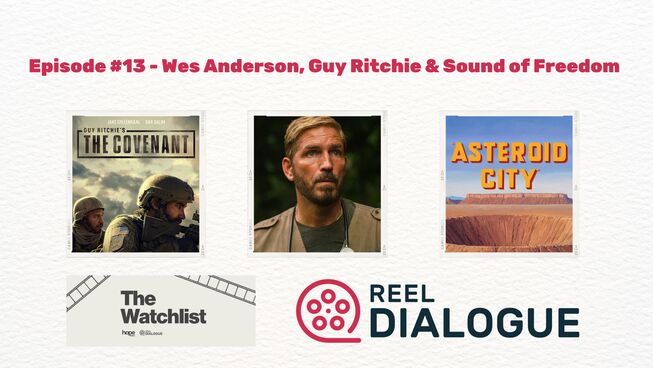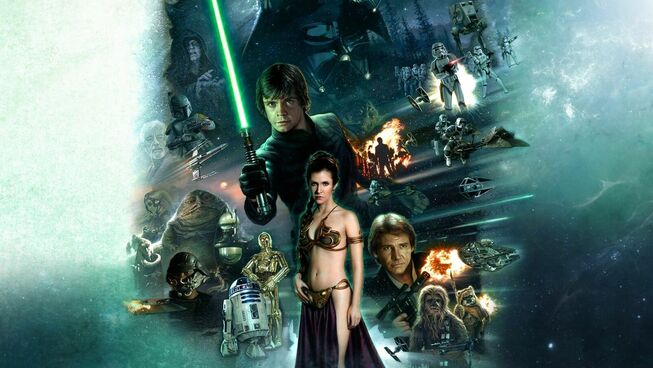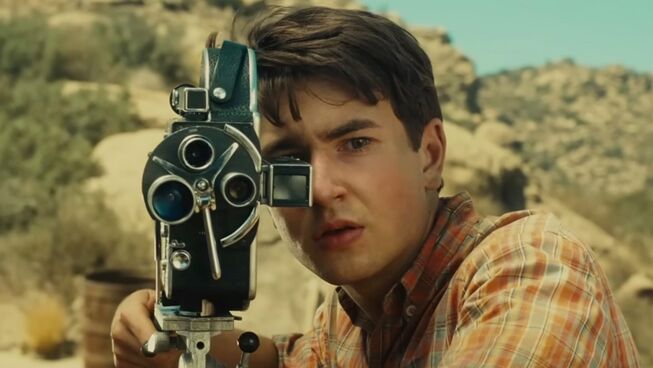Indiana Jones and The Raiders of the Lost Ark

The release of Steven Spielberg’s Raiders of the Lost Ark in 1981 signified a transition to the modern-day action-adventure movie. Like a thrilling amusement park ride, the audience is propelled through a gauntlet of gripping action sequences and elaborate set pieces, all tied together by unforgettable characters and smart dialogue. The film’s opening title sequence begins with the famous Paramount Pictures Mountain logo (circa 1940) and then cleverly transitions to a Peruvian summit. From there, the audience experiences a breathtaking adventure that never lets up during the film’s two-hour runtime. The journey begins in the jungles of South America and continues through an exotic travelog of threatening and mysterious locations. The freezing Nepalian mountains are followed by the scorching heat of the Egyptian desert. There is the brief comfort of an American college classroom and the danger of a Nazi submarine bunker. There is mystery behind a forgotten map room and in a perilous tomb. Finally, there is a faraway island where the villains meet their untimely demise. Along the way, our hero, Indiana Jones, battles the evil Nazis in a burning airplane hangar; on horseback and in a speeding truck; in a submarine and on a pirate ship; in an ancient vault called the Well of Souls, and in a forgotten tomb that houses the lost Ark of the Covenant. If that isn’t enough, Indy brushes off scary tarantulas, outruns a giant boulder, dodges poisonous spears, and comes face-to-face with venomous snakes. Why did it have to be snakes? Raiders of the Lost Ark is what film critic Roger Ebert calls a Bruised Forearm Movie.
“You know what a Bruised Forearm Movie is. That's the kind of movie where your date is always grabbing your forearm in a viselike grip, as unbearable excitement unfolds on the screen. After the movie is over, you've had a great time, but your arm is black-and-blue for a week.”
The plot is wonderfully simplistic. It is 1936 and Hitler’s Third Reich has grown more aggressive and powerful. A swashbuckling archaeologist named Indiana Jones (Harrison Ford) is hired by the United States government to locate Christendom’s most holy and long-lost relic, the Ark of the Covenant. According to the biblical account, the Ark carried the stone tablets that depicted the Ten Commandments and functioned as a conduit for God’s presence and continual communication with the Israelites. In the film, it is believed that whichever side possesses the Ark has access to God's power and an invincible army. The race to locate the lost artefact brings Indy to an old dive called “The Raven” somewhere in the desolate Himalayas of Nepal. Indy’s one-time mentor and Ark aficionado, Abner Ravenwood, owns a medallion that is key to determining the Ark’s location. After learning of Abner’s death, Indy partners with an old flame and Abner’s daughter, Marion Ravenwood (Karen Allen). As a young teenager, Marion was spurned by a much older Indiana Jones who after all these years needs her help. Later, Indiana calls on another old friend and Egyptian excavator, Sallah (John Rhys-Davies). Along the way the team thwarts some of Hitler’s henchmen, including an opportunistic Frenchman named Belloq (Paul Freeman) and a sadistic Nazi Gestapo toady named Major Toht (Ronald Lacey).
In 1973 legendary filmmaker George Lucas had an idea for what he called The Adventures of Indiana Smith. Lucas wanted to celebrate the matinee film serials and pulp comic strips he enjoyed as a young boy growing up in the fifties. Episodic movie serials were popular entertainment during the 1930s and 1940s. Before the invention of television, people would go to the theatre to watch a 20-minute episode of a show like Buck Rogers, Zorro, or Don Winslow of the Navy. Each episode ended on a cliffhanger, teasing the viewer to return next week to find out what happens. Lucas wanted to make a modern movie version of what was essentially a lineup of short, nail-biting action sequences. Ironically, the creator of the Star Wars mythology is not known for being a great director or storyteller. Lucas’ genius is in his ability to develop big ideas into technical concepts and surround himself with talented people who can execute his vision. Few films illustrate this approach better than Raiders of the Lost Ark. The film’s credits read like a Hollywood Dream Team. Renowned director and screenwriter Philip Kauffman (Invasion of the Body Snatchers, The Right Stuff) developed Lucas’ loose storyline until it was ready to script. For that task, Lucas turned to friend and collaborator Lawrence Kasdan. This legendary writer co-wrote The Empire Strikes Back and became one of the most prolific screenwriters ever (The Big Chill, Silverado, The Bodyguard). Despite having a workable screenplay, Lucas shelved the project for four years to focus on an ambitious fantasy space opera called Star Wars.
In a 2011 interview, Steven Spielberg reflected on his friendship with George Lucas and how they became partners on Raiders. Amazingly, by 1979 the iconic director’s star was beginning to fade, even after delivering hugely successful films like Jaws and Close Encounters of the Third Kind. Spielberg’s latest film, 1941, came in over budget and behind schedule. The film was also universally panned by film critics and bombed at the box office. It was just before the release of the first Star Wars movie, and an insecure Lucas feared it would flop. Lucas asked Spielberg to hide out with him in Hawaii. They built “good luck sandcastles” on the beach and then Lucas pitched the idea for a globetrotting archaeologist that became Indiana Jones. The rest, as they say, is history. Star Wars: A New Hope became a huge success, and Spielberg was offered a chance to redeem himself after the bomb that was 1941.
With all his attention on the Star Wars franchise, Lucas continued to assemble what is, in hindsight, the most impressive collection of talent in film history. Steven Spielberg, arguably the best storyteller of the last 50 years, agreed to direct Raiders. Frank Marshall was then brought on as executive producer. Considered one of the most important producers in Hollywood, Marshall has backed several successful film franchises, including Indiana Jones, Back to the Future, and Bourne. Genius film composer and conductor John Williams scored the film. The Raiders March is an iconic piece of music that perfectly represents Indiana’s dogged determination. For visual effects, Lucas tagged another friend and collaborator, Richard Edlund. He was a founding member of Lucas’ legendary visual effects company Industrial Light & Magic (ILM). Finally, Michael Kahn was hired to lead the editing process. Kahn went on to win the Academy Award in 1982 for his work on Raiders and has since edited nearly all of Steven Spielberg’s films.
Often, the collection of small details and luck turn a film into a timeless classic. For example, the name for the title character came from Lucas’ dog, an Alaskan malamute called Indiana. Early in the story development, both Spielberg and Kasdan had problems with the last name “Smith”. They suggested a change to “Jones” and Lucas agreed. Lucas was, however, set on the specifics for Indiana’s overall appearance. Inspired by Humphrey Bogart’s character in a film called Treasure of the Sierra Madre, Indiana was festooned with a fedora, leather jacket, and whip. Actor Tom Selleck was originally cast as Indiana Jones, but due to scheduling conflicts with his hit television show Magnum P.I. Selleck had to back out. Spielberg used detailed storyboards and miniatures for every single shot in the film. His meticulous planning saved hours of production time and ensured the film was delivered on time and under budget. Consequently, Spielberg’s reputation in the industry was restored, and he went on to have a decent career.
There are dozens of little anecdotes about the filming of Raiders that illustrate how Spielberg’s childlike imagination and attention to detail translate to expert storytelling. One example is in the opening scene when a character named Satipo (Alfred Molina) is covered with tarantulas. Bothered by the tarantulas’ lack of movement, Spielberg consulted with an animal expert who suggested adding a female tarantula to make the male tarantulas “go crazy”. In the Well of Souls scene, Spielberg needed thousands of snakes. The crew collected every available snake from every pet store in the area. Still, Spielberg wasn’t satisfied and called for more. Without the advantage of CGI, the production turned to hundreds of yards of rubber hoses instead. They cut off thousands of pieces of hose in the approximate lengths of different species of venomous snakes and threw them onto the set with the real ones.
Indiana Jones and Raiders of the Lost Ark was released to theatres on June 12, 1981. The film’s widespread critical acclaim slowly translated to the box office. The much-anticipated release of Superman II blunted the initial ticket sales for Raiders and caused people to delay seeing it. In a pre-digital marketing environment, positive word-of-mouth created a slow buildup of momentum that kept Raiders in theatres for a staggering thirteen months. The film grossed $390 million on a $20 million budget and fostered four sequels. It won four Academy Awards, including Best Art Direction, Best Film Editing, Best Sound, and Best Visual Effects. To this day, Raiders remains one of the most satisfying and well-executed action-adventure films of all time.

Reel Marriage
Lights, Camera... Movies and Marriage!
Marriage is one of life’s greatest blessings, yet it faces countless challenges in today’s world. How can we strengthen our commitment and help others see its value? The Bible offers wisdom, but what if movies could serve as a bridge to deeper conversations about love, faith, and commitment?
Reel Marriage explores how film and Scripture can illuminate the beauty of marriage, providing fresh insights into God’s design for love and relationships. From classic romances to modern dramas, movies capture couples' struggles and triumphs, mirroring biblical truths in powerful ways.
Faith and film unite. Are you ready to see marriage in a whole new light?
If you order your copy today you will also receive a complementary handbook that is only available with the purchase of the book (Print or ebook)
